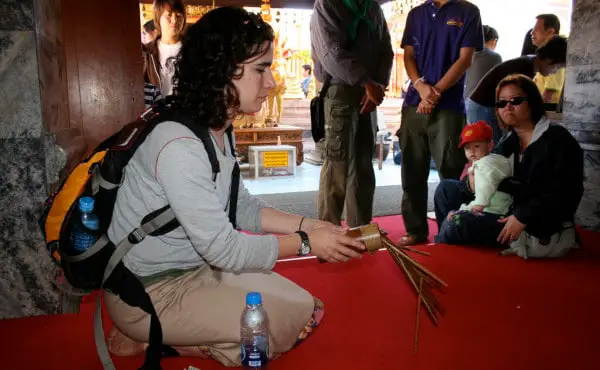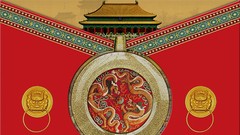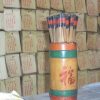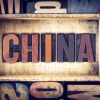
As we all know, the far-eastern cultures of countries like China, Korea, and Japan are rich with mysticism and spirituality, The Chinese, more specifically, are widely known for their deep obsession to mysticism and especially various forms and variations of fortune-telling.
Feng shui and the Chinese zodiac system are just some examples of Chinese fortune telling activities that are also well-known and famous all over the world.
One of these fortune-telling activities that is also popular is using what is called Chinese fortune sticks. (Related: Chinese Fortune Sticks in a nutshell)
The Chinese have used these fortune sticks for centuries and are commonly seen as similar to a chance game. In this post, we will learn all we need to know about the Chinese fortune sticks, starting with the historical background.
Brief History of Chinese Fortune Sticks
The fortune-telling method using the fortune sticks as a medium has been around since the times of ancient China, and more specifically since the Jin Dynasty (266-420 CE), as recorded in the Jade Box Records (Yu Xia Ji) 玉匣, the ancient Chinese book believed to be written Xu Xun, a famous Taoist monk in the 3rd-century CE.
The Jade Box Records is essentially a manual book to choose whether a certain day/date is suitable for certain activities (marriage, opening a new business, travel, and so on).
The Chinese fortune sticks flourished when China was still a huge empire and Taoism is still the biggest religion in the Chinese culture then.
Fortune telling, back then, was seen as an act of surrendering to one’s fate, and the Chinese back then really believed that they—more specifically, the fortune-tellers— were able to glimpse, or even see the future.
The fortune sticks, as a fortune-telling tool, was then used to calm people who were burdened by their lives, those who were looking for answers and advice in the temples for their worries.
The fortune sticks are used as a medium to answer these people’s specific questions about their fates and their lives. They sincerely believe that their gods (of the Taoist pantheon) will provide their answers through the fortune sticks. The Chinese back then believed that these fortune sticks are indeed, divine.
In these modern times, however, the fortune stick is still a very popular and important tradition for the Chinese. Some (especially the elderly) still believe in the tradition, but some others might view fortune-telling just as something fun and might do it for the sake of tradition alone.
This tradition, however, is no longer exclusive. Anyone (including non-Chinese) that might want to explore Chinese tradition and the mystical aspect of the Chinese cultures can try to see their future using the Chinese fortune sticks in various places in China and even all over the world.

How To Use Chinese Fortune Sticks
The original words to describe the Chinese fortune sticks are Kau Cim, and the Chinese fortune sticks actually consist of two key components:
- The cim tong or cim bucket ( 筒 Pinyin, qian tong, cim tong, chim tong, chien hung), a relatively long bamboo cup or tube to store the fortune sticks
- The sticks or the cim ( , qian, cim, chim, chien), the flat sticks that are going to be stored in the “bucket”. If you are familiar with incense sticks (used in Buddhism), they look quite similar but painted red at one end. Each stick has a different inscribed number on it, and no two sticks in the bucket have the same number. They are usually a total of 100 sticks (numbered 1-100) in the cup.
The fortune-telling “ritual” is performed by kneeling and thinking silently (alternatively, the querent can whisper the question to the deity) while holding the cim tong between their palms.
The querent shouldn’t hesitate when thinking/asking about the question and shouldn’t change questions in the middle. The cim tong is shaken and tipped slightly downward so one stick will leave the bucket and drop into the floor. If more than one sticks leave the cylinder, the fortunes would not count and the querent must shake the cim tong once more.
Chinese Fortune Sticks Number Meaning
When a single stick finally falls out, the number will correspond to the written, numbered oracles with a specific answer on it. The oracles typically will include a Chinese Jueju poem in it, printed or handwritten on a piece of paper. The paper is usually 4.7′-5.9′ long (12-15 cm) and 1.6′ (4 cm) wide. The poem written in the oracle is believed to be the answer from the deities, specific for the querent.
However, what the answer said might need to be interpreted by an interpreter or specialist, generally a Taoist monk or a fortune teller. The specialist might use a book of Chinese stories and poetic phrases to interpret the answer for you.
In most cases, the fortune interpretation is short-term and should cover no more than one year (starting from the Chinese New Year).
The interpreter might also charge a small fee, and they might also offer other fortune-telling services like Feng Shui reading, palm reading, and so on. Typically the interpreted answer is a retelling of a historical Chinese story that might fit the context of the oracle.
These stories are often retold and recontextualized to modern times. The story is intended to tell the querent about the forthcoming event that is about to be experienced by the querent.
The supposed accuracy of the fortune-telling using these Chinese fortune sticks (or Kau Cim) will heavily depend on the interpreter. This is why some people might consult with different fortune-tellers and interpreters to check whether similar interpretations are drawn (which is regarded as a strong indicator of a “correct” interpretation.
Related reading: Ancient Chinese fortune telling Methods that Still Exist – Opens in new tab.

Other Versions of Chinese Fortune Sticks All Around The World
As a popular Chinese tradition, Kau Cim or the Chinese fortune sticks have spread all around the world breeding various variations. Many other cultures outside China perform a similar practice of using sticks and bucket/tube as fortune-telling mediums, such as:
- Chi Chi Sticks. An adaptation of Chinese Fortune Sticks that was introduced in the US in 1915. Contains only 78 numbered sticks instead of the usual 100 and the oracles have different content and interpretation. Chi chi sticks were quite popular all across America during the early 1920s to the 1930s, especially among African-Americans since they are widely used by African-American fortune-tellers back then. The chi chi sticks were exported from China through mail-order catalogs, and so, when China was invaded by Japan during World War II, trade routes were disrupted and so they fell out of popularity in the US due to limited supply.
- The Kau Cim, being originally a Taoist practice, is adapted to Buddhism and called “Guan Yin Oracle“, and so the religious emphasis within the oracles and their interpretations are adjusted to fit Buddhism
- The Buddhist variation of the Chinese fortune sticks is then adapted in various countries all around the world, like the Siam Si (เซยมซ) practice that can be found in a lot of shrines and temples in Thailand.
- A similar practice is also very popular in Japan, called O-Mikuji, although it’s unclear whether O-Mikuji was directly inspired by the ancient Chinese fortune sticks tradition. O-mikuji involves random fortunes written on strips of paper (and the interpretation is often also written within the same paper).
End Words
Chinese fortune sticks or Kau Cim are still very popular today in China and other countries where there are a lot of Chinese descents.
In Hong Kong, for example, Kau Cim is very popular even among the young, especially in the Wong Tai Sin Temple, which can draw millions of people during the Chinese New Year.
Various attempts to modernize the practice have been tried, for example by using mobile apps and attaching RFID tags to the sticks. However, apparently people still prefer the old-school, traditional style of fortune-telling.
The Chinese fortune sticks, and the fortune-telling activities in China as a whole, will still be a very important aspect of the Chinese tradition for the years to come.
Online Courses about Chinese Culture from Udemy (Aff.link)

Stay in Touch
 Join our newsletter by using the forms on this website or click here!
Join our newsletter by using the forms on this website or click here! Follow us on Google News
Follow us on Google News Follow us on Facebook
Follow us on Facebook
Featured image by Pbdragonwang from Wikimedia commons. (CC BY-SA 4.0)




